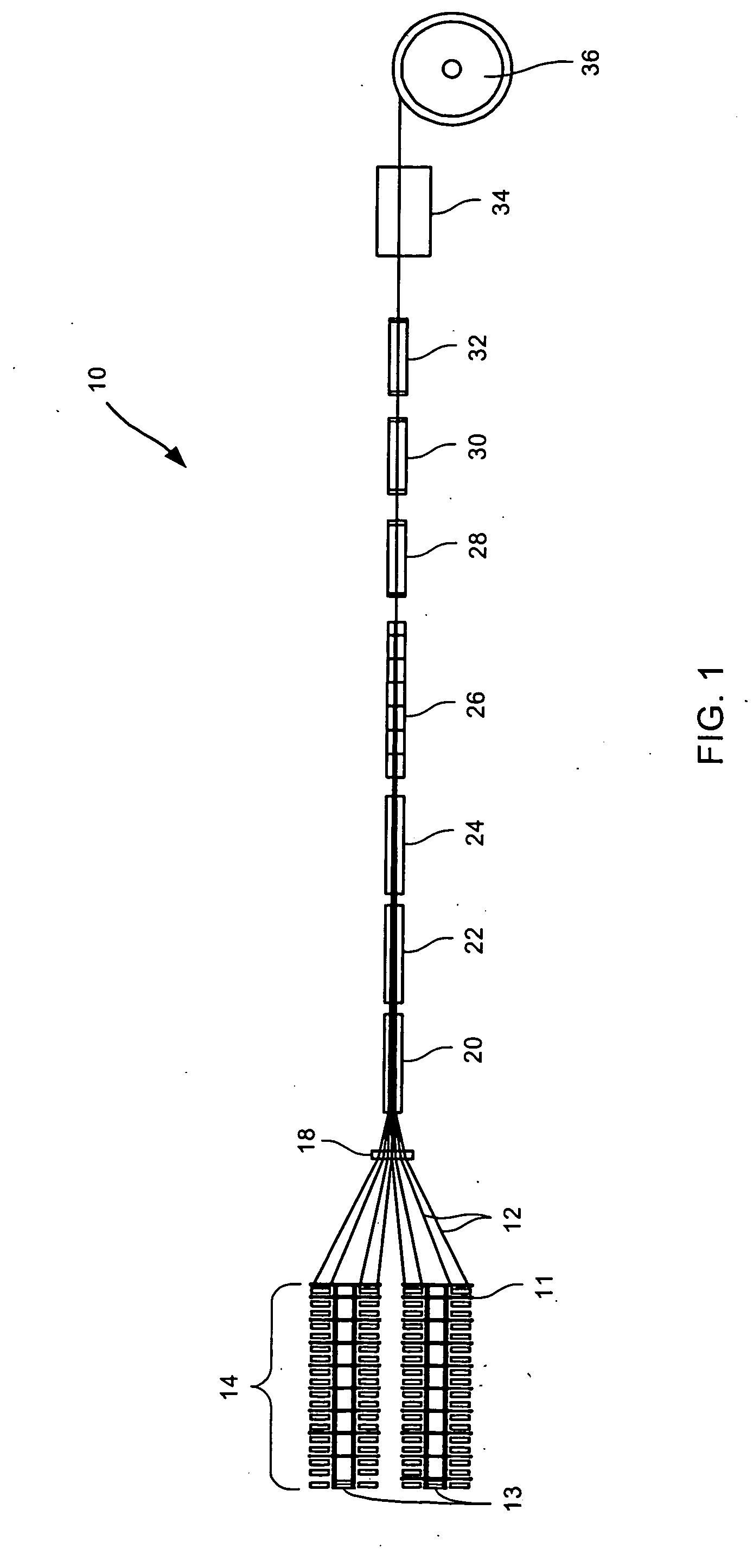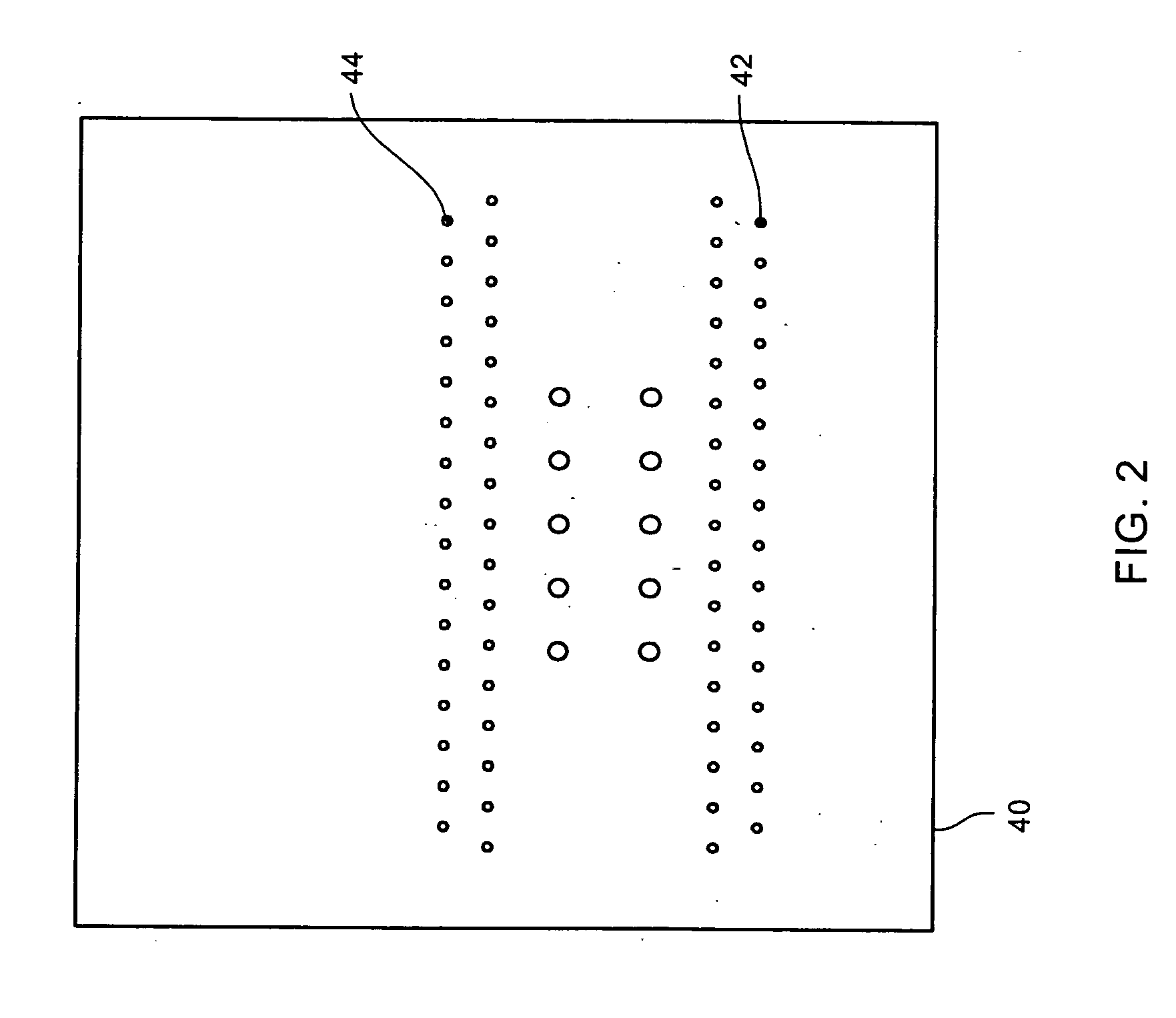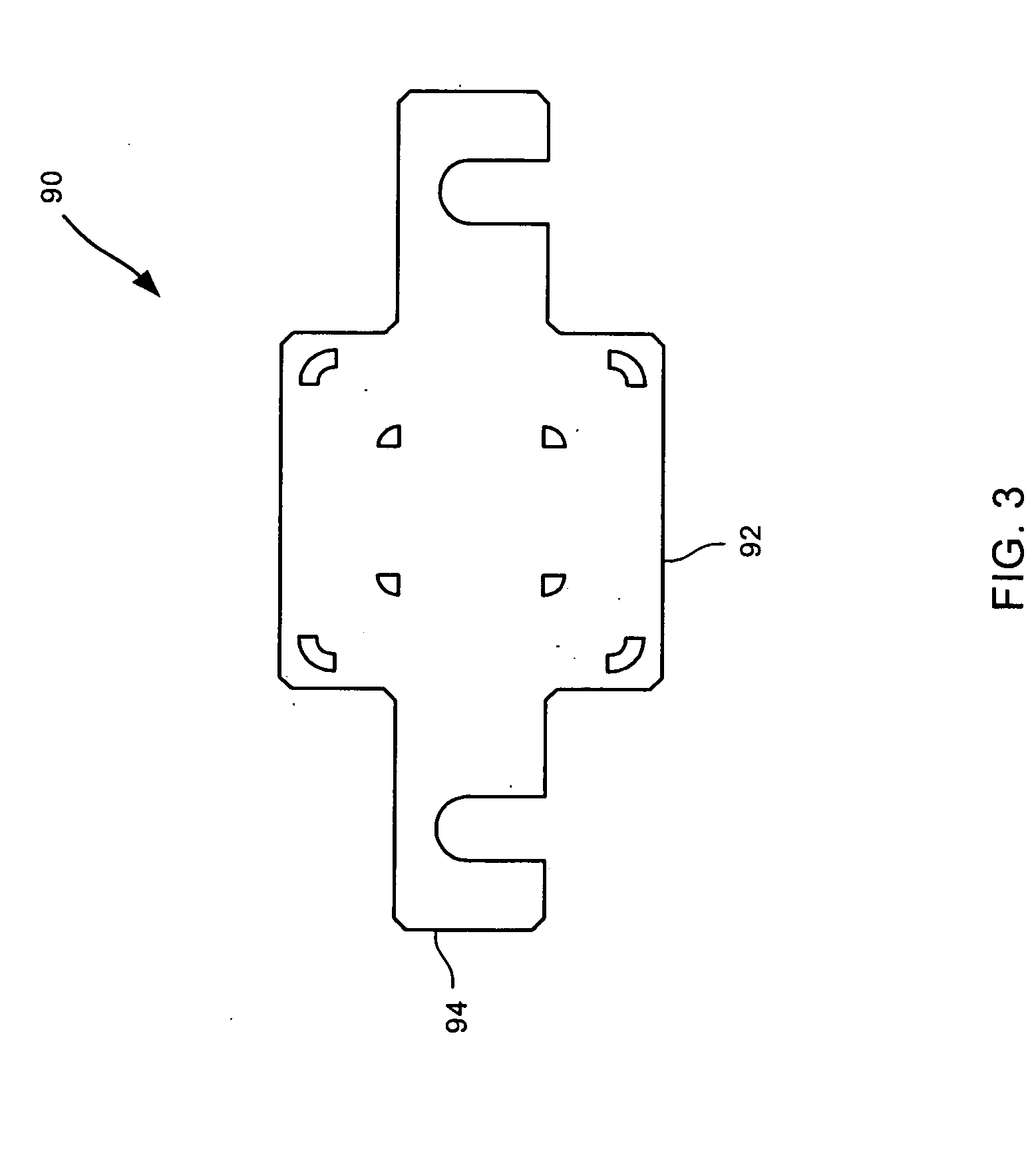Aluminum conductor composite core reinforced cable and method of manufacture
a technology of aluminum conductors and composite cores, which is applied in the direction of insulated conductors, cables, power cables, etc., can solve the problems of increasing the weight of the conductor, contributing to the sag, and the cable to sag below permissible levels, so as to improve the strength, reduce the electrical resistance, and increase the ampacity
- Summary
- Abstract
- Description
- Claims
- Application Information
AI Technical Summary
Benefits of technology
Problems solved by technology
Method used
Image
Examples
example
[0131] An example of an ACCC reinforced cable in accordance with the present invention follows. An ACCC reinforced cable comprising four layers of components consisting of an inner carbon / epoxy layer, a next glassfiber / epoxy layer and two layers of tetrahedral shaped aluminum strands. The strength member consists of an advanced composite T700S carbon / epoxy having a diameter of about 0.2165 inches, surrounded by an outer layer of R099-688 glassfiber / epoxy having a layer diameter of about 0.375 inches. The glassfiber / epoxy layer is surrounded by an inner layer of nine trapezoidal shaped aluminum strands having a diameter of about 0.7415 inches and an outer layer of thirteen trapezoidal shaped aluminum strands having a diameter of about 1.1080 inches. The total area of carbon is about 0.037 in2, of glass is about 0.074 in2, of inner aluminum is about 0.315 in2 and outer aluminum is about 0.5226 in2. The fiber to resin ratio in the inner carbon strength member is 70 / 30 by weight and the...
PUM
| Property | Measurement | Unit |
|---|---|---|
| coefficient of thermal expansion | aaaaa | aaaaa |
| operating temperature | aaaaa | aaaaa |
| volume fraction | aaaaa | aaaaa |
Abstract
Description
Claims
Application Information
 Login to View More
Login to View More - R&D
- Intellectual Property
- Life Sciences
- Materials
- Tech Scout
- Unparalleled Data Quality
- Higher Quality Content
- 60% Fewer Hallucinations
Browse by: Latest US Patents, China's latest patents, Technical Efficacy Thesaurus, Application Domain, Technology Topic, Popular Technical Reports.
© 2025 PatSnap. All rights reserved.Legal|Privacy policy|Modern Slavery Act Transparency Statement|Sitemap|About US| Contact US: help@patsnap.com



